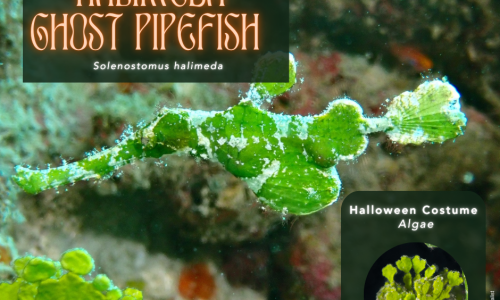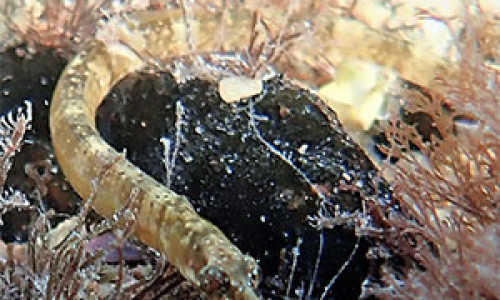Amanda Vincent has pipefish species named after her
A new species of pipefish found in Patagonia, Argentina, in the south‐west Atlantic Ocean has been named after IOF Professor Amanda Vincent. Prof Vincent has long led conservation efforts for pipefishes, seahorses and seadragons (family Syngnathidae) and is Chair of the global expert group on these fishes.
The Journal of Fish Biology paper describing the species, Leptonotus vincentae, states that it “is named after Amanda Vincent, whose work on conservation of syngnathids [pipefishes and seahorses] has increased our chances of having healthy populations of these fishes in the threatened seas of the world.” Prof Vincent and her Project Seahorse team have received many awards for their measurable achievements in marine conservation.

Dr. Amanda Vincent
Prof Vincent is delighted by this honour. “I’m so thrilled to have my very own pipefish species, from an area of the world that I love. Huge thanks for this marvellous honour. I can’t wait to visit the pipefish in their natural habitat; we must redouble our efforts to protect the area.”
“I can’t wait to visit the pipefish in their natural habitat,” says Prof, Amanda Vincent
Leptonotus vincentae (with the common name of Patagonian pipefish) was discovered in the shallow waters of Argentina’s San Antonio Bay (40° 45′ S 64° 52′ W), a marine protected area regulated by the provincial government and categorized as V, Protected landscape–seascape by the IUCN.
Diego C. Luzzatto, the Argentinian biologist, who along with his wife and fellow scientist María L. Estalles, first found and described the pipefish, said naming it after Dr. Vincent was “the obvious answer is because of her huge work on syngnathids and their conservation.” Vincent had visited Luzzatto and Estalles a few years ago and greatly impressed them. “When I did noticed the new pipefish, there were no doubts about the name,” Luzzato said. He wrote to Prof Vincent that “this species is dedicated to you and your legacy on the conservation of seahorses and their relatives. Your work, dedication and love for these fishes have inspired many young scientists.”
This genus of pipefishes, Leptonotus, is distinguished by the fact that males brood eggs on their tail with advanced parental care. Males and females differ in other ways, too; when courting, for example, females develop bright stripes on their deep flattened bodies. Leptonotus is the only genus of pipefish found in Patagonia and all four species, including L. vincentae, are only known from the southern seas around South America and New Zealand.
Source: Leptonotus vincentae, a new pipefish species (Syngnathidae: Syngnathinae) from the south‐west Atlantic Ocean near northern Patagonia, Journal of Fish Biology.
Tags: [Tags]

